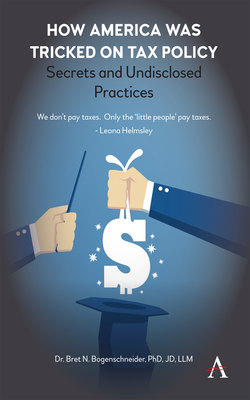How America was Tricked on Tax Policy

Реклама. ООО «ЛитРес», ИНН: 7719571260.
Оглавление
Bret N. Bogenschneider. How America was Tricked on Tax Policy
Отрывок из книги
HOW AMERICA WAS TRICKED ON TAX POLICY
SECRETS AND UNDISCLOSED PRACTICES
.....
This technical explanation explains why nearly all capital investment flows into countries with relatively high corporate tax rates, such as Germany, South Korea, Japan, and (previously) the United States. Large corporations nearly always invest into high-tax jurisdictions, contrary to the predictions of economic theory. Corporate tax cuts paradoxically have the effect of reducing the attractiveness of that country for capital reinvestment. A multinational company seeking to maximize the value of present tax deductions would instead choose to reinvest capital into the higher-tax jurisdiction. But this is true only where the multinational firm is already profitable in the higher-tax jurisdiction, but this will nearly always be the case and should be presumed in the design of tax policy.
Another widely held belief about taxes and tax policy is that corporations are subject to two layers of taxation—once at the firm level, and again at the shareholder level—often referred to as double taxation. Tax commentators often refer to the double taxation of corporate profits as harmful to economic growth and as a justification for reducing the corporate rate. This is nonsense. The second layer of shareholder-level tax never has a chance to arise if the corporation continues to grow and reinvest profits into existing business lines, and accordingly, does not elect to pay dividends. As a general matter, large corporations are not forced to pay shareholder dividends because the Internal Revenue Service does not enforce the accumulated earnings tax under IRC §531 et seq. against those corporations, so any shareholder-level tax is simply delayed indefinitely until the corporation chooses to pay dividends, or never. Also, even if dividends are paid by the corporation to shareholders, not all shareholders are taxable on dividends received, such as when shares are held by a pension or sovereign investment fund, in a retirement plan such as a 401(k), or by any other nontaxable shareholder. Tax advisors to large corporations generally do not expect to pay a higher rate of corporate tax irrespective of the corporate statutory tax rate, which is why they choose to operate in corporate form in the first place. The availability of corporate-level tax deductions, lack of tax enforcement by the Internal Revenue Service especially in respect to transfer pricing by multinational firms, and the potential to delay the levy of tax at the shareholder level by not paying dividends represent several reasons why the corporate form is selected by tax experts for the operation of large business irrespective of the corporate statutory tax rate.
.....